Stacking Nootropics

Nootropics can be natural or synthetic substances that are taken to improve cognitive function and give your mental performance an edge. Nootropics are available in supplement form and can work to increase memory, creativity, focus, mood and even motivation.
Nootropics work through different biochemical mechanisms stimulating multiple brain pathways, depending on the ingredient. They can control neurotransmitters and chemical messengers such as the dopaminergic pathways and cholinergic system pathways. Nootropics have also been found to have an impact on the brain’s energy utilization, blood flow and brain wave production, as well as brain cell regeneration and neuroprotection.
Because each nootropic can have a unique impact on brain chemistry and function, stacking them together can be ideal for best results. However, science has shown that some nootropics taken at too high of a dose or taken in conjunction with other nootropics can actually reduce the effects! Nootropics are very powerful, so when formulating a nootropic stack, you need to know what to take (and not take) to achieve the right effect. This review will focus on the best nootropics available in supplement form and how to stack them for the ultimate brain-boosting benefit.
Cognitive Benefits of Nootropics
 Before we get to the ultimate nootropic stack, let’s get a quick understanding of just how nootropics work to enhance our brainpower. The cognitive benefits of nootropics can include improvements in short, long-term and working memory and in learning, verbal acuity and informational processing.1 Nootropics can improve mood and motivation, activating neurotransmitters in the brain that drive the pleasure-reward system of the brain. They have also been shown to help stimulate creativity by improving brain-wave power and through adaptogenic benefits that enhance how we handle stress and mental fatigue. Nootropics can also stimulate neurotransmitter levels, improving focus, concentration and attention.
Before we get to the ultimate nootropic stack, let’s get a quick understanding of just how nootropics work to enhance our brainpower. The cognitive benefits of nootropics can include improvements in short, long-term and working memory and in learning, verbal acuity and informational processing.1 Nootropics can improve mood and motivation, activating neurotransmitters in the brain that drive the pleasure-reward system of the brain. They have also been shown to help stimulate creativity by improving brain-wave power and through adaptogenic benefits that enhance how we handle stress and mental fatigue. Nootropics can also stimulate neurotransmitter levels, improving focus, concentration and attention.
What Are the Best Nootropics?
Alpha-GPC (L-Alpha Glycerylphosphorylcholine)
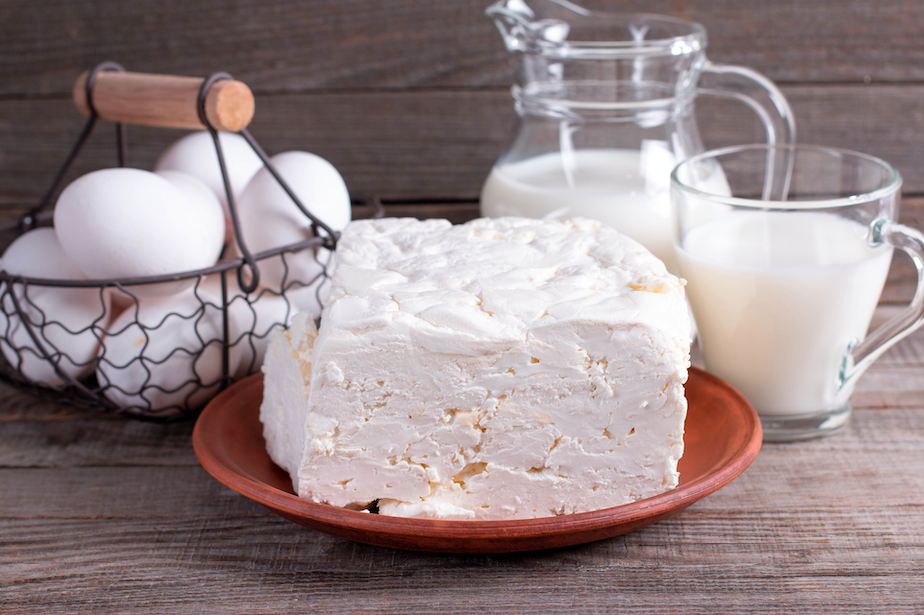 This is a natural source of choline (40 percent choline by weight) and is found in eggs, cheese, yogurt, milk and soy. In your body, alpha-GPC readily crosses the blood–brain barrier, where it acts as a biosynthetic precursor of acetylcholine after its conversion to phosphorylcholine. As such, it has been researched for its potential for the treatment of Alzheimer’s disease. Some believe the compound may also increase the release of dopamine and calcium. Typical dosage is 300 milligrams to 1,200 milligrams per day, but most people start with 300 milligrams twice daily to assess tolerance.
This is a natural source of choline (40 percent choline by weight) and is found in eggs, cheese, yogurt, milk and soy. In your body, alpha-GPC readily crosses the blood–brain barrier, where it acts as a biosynthetic precursor of acetylcholine after its conversion to phosphorylcholine. As such, it has been researched for its potential for the treatment of Alzheimer’s disease. Some believe the compound may also increase the release of dopamine and calcium. Typical dosage is 300 milligrams to 1,200 milligrams per day, but most people start with 300 milligrams twice daily to assess tolerance.
DMAE (Dimethylaminoethanol)
 This was once sold as a prescription drug for children with learning and behavioral problems under the name Deanol. It was withdrawn from the market in 1983, and its popularity as a nootropic has declined in the last few years. DMAE is naturally produced in the body, but it’s also found in fatty fish, such as salmon, sardines and anchovies. Like alpha-GPC, DMAE is thought to work by increasing production of acetylcholine but not as a precursor, but rather by inhibiting its metabolism.2 Acetylcholine is a neurotransmitter that helps regulate many functions controlled by the brain, including REM sleep, muscle contractions, and pain responses. Typical dosage is 100 milligrams to 200 milligrams per day. If you’re stacking this with huperzine A and/or alpha-GPC, lower your dose as taking these three nootropics together seems to cause brain fog in many users.
This was once sold as a prescription drug for children with learning and behavioral problems under the name Deanol. It was withdrawn from the market in 1983, and its popularity as a nootropic has declined in the last few years. DMAE is naturally produced in the body, but it’s also found in fatty fish, such as salmon, sardines and anchovies. Like alpha-GPC, DMAE is thought to work by increasing production of acetylcholine but not as a precursor, but rather by inhibiting its metabolism.2 Acetylcholine is a neurotransmitter that helps regulate many functions controlled by the brain, including REM sleep, muscle contractions, and pain responses. Typical dosage is 100 milligrams to 200 milligrams per day. If you’re stacking this with huperzine A and/or alpha-GPC, lower your dose as taking these three nootropics together seems to cause brain fog in many users.
Huperzine A
 This is extracted from Chinese club moss or fir club moss plants and has been a stable in gaming supplements since their inception, but it has been used in pre-workouts since the original BSN N.O.-Xplode first came out. Huperzine A is an acetylcholinesterase inhibitor. This means it stops an enzyme from breaking down acetylcholine, which results in increases in acetylcholine. Typical dosage is 50 to 200 micrograms daily. Cycling this nootropic makes sense as it has a half-life of 10 to 14 hours, causing it to remain in your body for quite some time.
This is extracted from Chinese club moss or fir club moss plants and has been a stable in gaming supplements since their inception, but it has been used in pre-workouts since the original BSN N.O.-Xplode first came out. Huperzine A is an acetylcholinesterase inhibitor. This means it stops an enzyme from breaking down acetylcholine, which results in increases in acetylcholine. Typical dosage is 50 to 200 micrograms daily. Cycling this nootropic makes sense as it has a half-life of 10 to 14 hours, causing it to remain in your body for quite some time.
Theanine
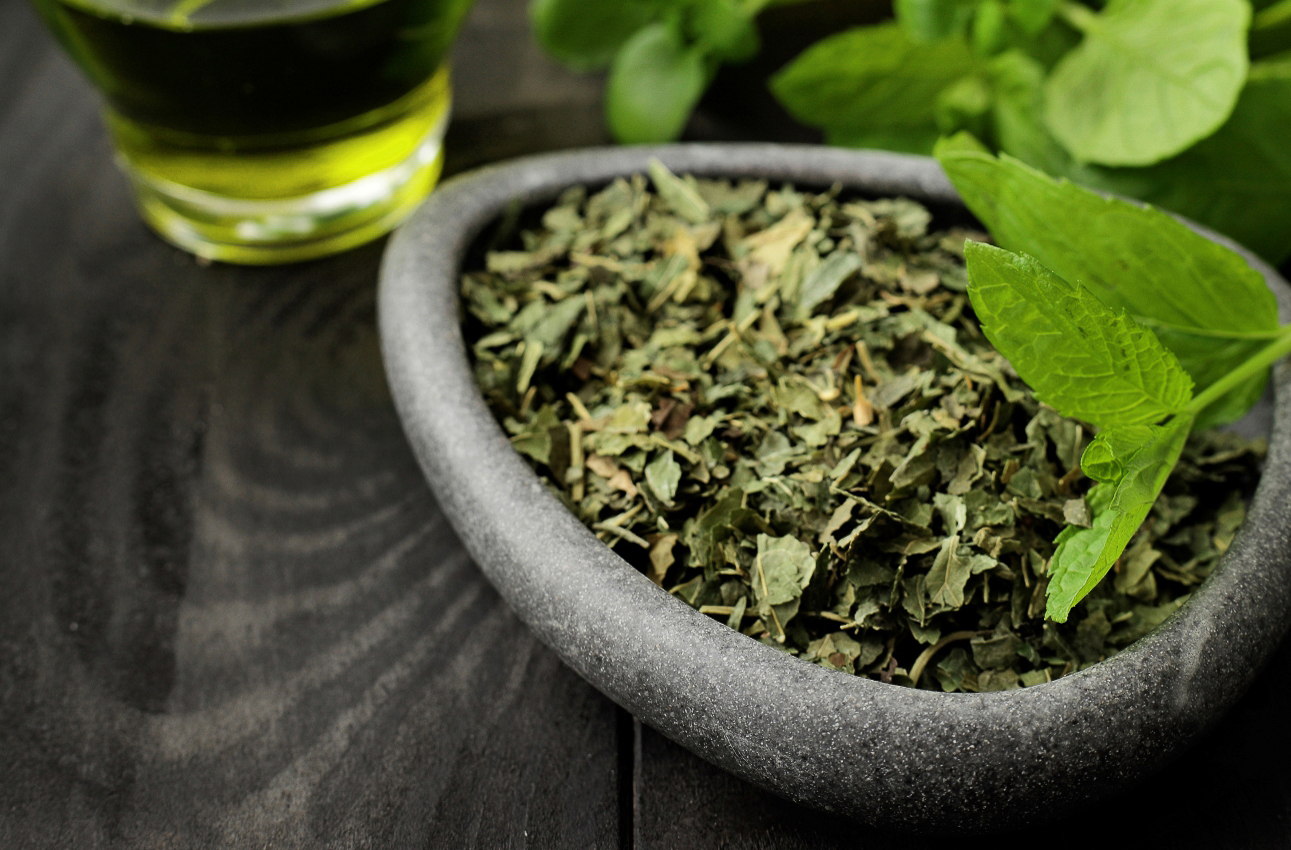 This is derived from green tea, which is a well-known and potent antioxidant. It has the ability to cross the blood-brain barrier and exert psychoactive effects. L-theanine has been shown to increase the levels of the neurotransmitters gamma-amino-butyric-acid (GABA), dopamine, and serotonin in the brain. Studies also show that supplementation with L-theanine works to produce a sense of relaxation and well-being, but without sedative effects. This makes L-theanine unique in that it will work to allow for sustained mental focus without stimulation of the central nervous system. There’s a fine line of feeling drowsy with theanine if you take too much. Dosage is often 100 milligrams of theanine before an exam, but 200 milligrams daily for four-week cycles is quite popular. Theanine has also been stacked with caffeine for added benefits.
This is derived from green tea, which is a well-known and potent antioxidant. It has the ability to cross the blood-brain barrier and exert psychoactive effects. L-theanine has been shown to increase the levels of the neurotransmitters gamma-amino-butyric-acid (GABA), dopamine, and serotonin in the brain. Studies also show that supplementation with L-theanine works to produce a sense of relaxation and well-being, but without sedative effects. This makes L-theanine unique in that it will work to allow for sustained mental focus without stimulation of the central nervous system. There’s a fine line of feeling drowsy with theanine if you take too much. Dosage is often 100 milligrams of theanine before an exam, but 200 milligrams daily for four-week cycles is quite popular. Theanine has also been stacked with caffeine for added benefits.
Choline
 This nootropic is involved in many different processes, such as cell structure and messaging, fat transport and metabolism, DNA synthesis and nervous system maintenance. This brain booster is a precursor to the neurotransmitter acetylcholine, which is associated with memory and concentration. Typical dosage is 500 milligrams daily and do not exceed this amount as many users have experienced diarrhea at higher doses.
This nootropic is involved in many different processes, such as cell structure and messaging, fat transport and metabolism, DNA synthesis and nervous system maintenance. This brain booster is a precursor to the neurotransmitter acetylcholine, which is associated with memory and concentration. Typical dosage is 500 milligrams daily and do not exceed this amount as many users have experienced diarrhea at higher doses.
Tyrosine
 This is a key precursor to dopamine, and a large body of research supports the use of tyrosine for enhancing both cognitive and athletic performance. The major drawback is the higher doses needed to match the research. For cognitive performance, you’re looking at 100 to 300 milligrams per kilogram of body weight per day.
This is a key precursor to dopamine, and a large body of research supports the use of tyrosine for enhancing both cognitive and athletic performance. The major drawback is the higher doses needed to match the research. For cognitive performance, you’re looking at 100 to 300 milligrams per kilogram of body weight per day.
Lion’s Mane
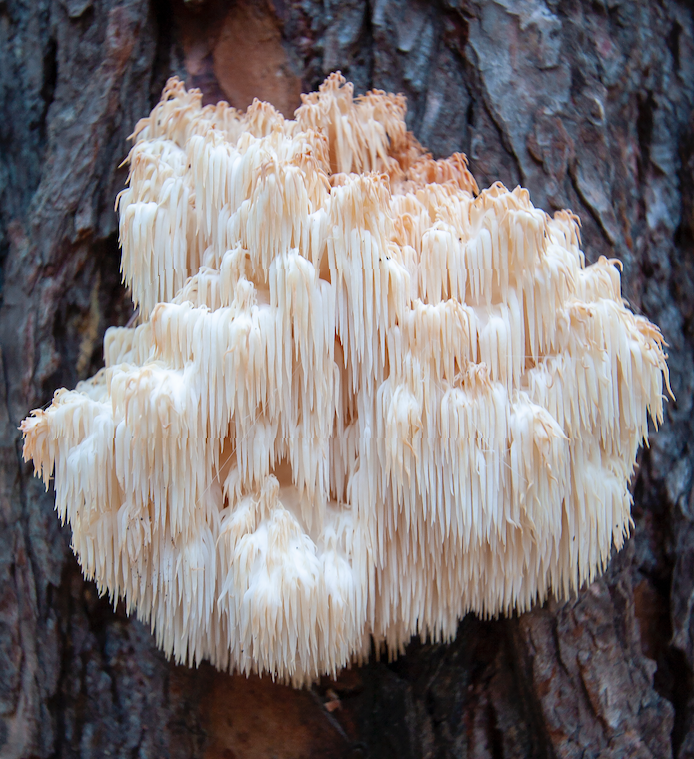 This mushroom extract is a neuroprotectant that supports memory and recall by increasing the amount of nerve growth factor in the brain. Because of the popularity of this fungus, many low-grade sources of lion’s mane have flooded the market. Stick to organic lion’s mane where possible, and buy from reputable sources. Typical dosage is 300 milligrams or 1,200 milligrams, but many do well on a 600-milligram daily dose.
This mushroom extract is a neuroprotectant that supports memory and recall by increasing the amount of nerve growth factor in the brain. Because of the popularity of this fungus, many low-grade sources of lion’s mane have flooded the market. Stick to organic lion’s mane where possible, and buy from reputable sources. Typical dosage is 300 milligrams or 1,200 milligrams, but many do well on a 600-milligram daily dose.
Caffeine
 Although this is a drug, caffeine is one of the most effective “nootropics” commercially available, a fact with which few scientists would argue. Caffeine is an adenosine antagonist that influences acetylcholine, epinephrine (adrenaline) and serotonin and boosts the use of dopamine. Caffeine also provides a protective effect by boosting gene expression of brain-derived neurotrophic factor (BDNF). Dosage depends on individual tolerance, but many experience nootropic effects at 100 to 200 milligrams of caffeine daily. According to the Mayo Clinic, 400 milligrams of caffeine per day appears to be safe for most healthy adults. However, the American Academy of Pediatrics recommend people ages 12 to 18 limit caffeine intake to no more than 100 milligrams per day.
Although this is a drug, caffeine is one of the most effective “nootropics” commercially available, a fact with which few scientists would argue. Caffeine is an adenosine antagonist that influences acetylcholine, epinephrine (adrenaline) and serotonin and boosts the use of dopamine. Caffeine also provides a protective effect by boosting gene expression of brain-derived neurotrophic factor (BDNF). Dosage depends on individual tolerance, but many experience nootropic effects at 100 to 200 milligrams of caffeine daily. According to the Mayo Clinic, 400 milligrams of caffeine per day appears to be safe for most healthy adults. However, the American Academy of Pediatrics recommend people ages 12 to 18 limit caffeine intake to no more than 100 milligrams per day.
Rhodiola
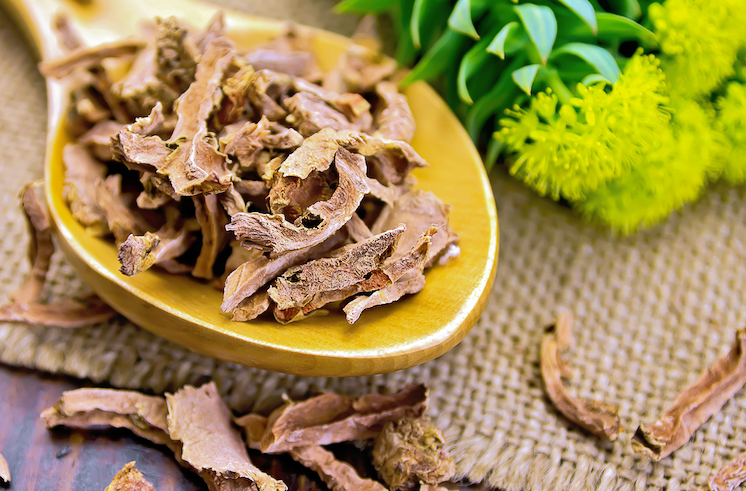 Rhodiola has been shown to have many nootropic benefits, in particular because of its salidroside activity. Rhodiola can work by inhibiting monoamine oxidases (MAO) and increasing neuropeptide Y (NPY) as well as brain-derived neurotrophic factor (BDNF), thus improving overall mood and decreasing depressive behavior.
Rhodiola has been shown to have many nootropic benefits, in particular because of its salidroside activity. Rhodiola can work by inhibiting monoamine oxidases (MAO) and increasing neuropeptide Y (NPY) as well as brain-derived neurotrophic factor (BDNF), thus improving overall mood and decreasing depressive behavior.
In one double-blind placebo-controlled human study, after 42 days of rhodiola extract supplementation, subjects experienced 65 percent to 70 percent improvements in well-being, indicating significant improvements in healthy mood states compared to those receiving a placebo.3
Additionally, rhodiola was shown to improve anxiousness, reduce fatigue and combat stress. One mechanism by which rhodiola works is by balancing the activity of serotonin receptors and increasing production of serotonin. Serotonin is made from the essential amino acid tryptophan and is involved in mood regulation, but it also plays a role in controlling bowel movements, appetite, nausea, sleep, blood clotting, bone health and sexual function. For our purposes, we’re interested in optimizing serotonin to increase brain performance.
Rhodiola Research
In a double-blind placebo-controlled study, supplementation with 100 milligrams of rhodiola extract for 20 days was tested in students during a stressful examination period. Results showed significant improvements in acute stress-induced fatigue, including cognition, mental clarity and physical fitness.4 Other studies performed in humans, using higher dosing protocols between 300 milligrams to over 500 milligrams of rhodiola extract were found to improve mental and physical stress caused by social and work dysfunction, improve memory, learning and cognition, and reduce feelings of fatigue.5,6
 How to Use
How to Use
Because the active components of rhodiola are so critical for its beneficial effects, top ingredient supplier NNB Nutrition engineered a more concentrated version of rhodiola (called RhodioPrime 6X), which is the highest purity of rhodiola we’ve studied and has a standardized salidroside content of 6 percent, which makes it the only extract on the market to contain this much of the active ingredient. Salidroside has various nootropic effects, providing support for the nervous system, cognitive function, mood support and even supporting energy levels. Consider RhodioPrime 6X, which is a highly potent, ultra-pure formula that delivers the active ingredient required for results. Recommended dosing for rhodiola is anywhere from 200 milligrams to 600 milligrams per day using typical standardization. Using RhodioPrime, you can go lower than this dose because of the higher concentration and purity of salidroside. Rhodiola is considered extremely safe, with few adverse side effects.
MCT Powder
 One of the most popular diets these days is the ketogenic diet, which requires strict restriction of carbs and a high amount of fat to move the body to ketosis. One effect of ketosis can be brain fog and fatigue. Supplementing with a quality medium-chain triglyceride (MCT) can have a neuro-protective effect. MCTs are a group of ultra-fast-absorbing saturated fats that are available for energy quickly. MCTs deliver 8.3 calories per gram. There are four different types of fats of different carbon length in all MCT oils referred to as C6, C8, C10 and C12. The highest the “C” number, the slower digesting the fat is. Each type provides different benefits and has a level of efficacy based on its purity. Compared to C10 and C12, C8 is by far the most effective MCT oil when it comes to brain function and getting your body into ketosis, because it helps stimulate the production of ketones most efficiently.
One of the most popular diets these days is the ketogenic diet, which requires strict restriction of carbs and a high amount of fat to move the body to ketosis. One effect of ketosis can be brain fog and fatigue. Supplementing with a quality medium-chain triglyceride (MCT) can have a neuro-protective effect. MCTs are a group of ultra-fast-absorbing saturated fats that are available for energy quickly. MCTs deliver 8.3 calories per gram. There are four different types of fats of different carbon length in all MCT oils referred to as C6, C8, C10 and C12. The highest the “C” number, the slower digesting the fat is. Each type provides different benefits and has a level of efficacy based on its purity. Compared to C10 and C12, C8 is by far the most effective MCT oil when it comes to brain function and getting your body into ketosis, because it helps stimulate the production of ketones most efficiently.
MCT Oil Research
One study examined the neuro-protective mechanisms of a ketogenic diet that contained both C8 and C107. The researchers measured the beta-oxidation rate of 13C-labeled C8 and C10 in neuronal cells using isotope-ratio mass spectrometry. The study found the beta-oxidation rate of C8 was four times higher than that of C10. In addition, C10 beta-oxidation was reduced in the presence of C8. This study showed that C8 has higher potential ketogenicity to yield more ketones than just average MCTs that you would find on the shelf.  Later in this article, we will explain why raising ketone levels (specifically R-BHB aka D-BHB) is so important for boosting brain fuel. C8Vantage (manufactured by NNB Nutrition) is a form of MCT oil powder that contains 95 percent C8, making it the most concentrated C8 MCT powder commercially available. This form would therefore offer higher ketogenic effects (producing R-BHB), improved satiety and enhanced fat oxidation compared to traditional MCT powder products.
Later in this article, we will explain why raising ketone levels (specifically R-BHB aka D-BHB) is so important for boosting brain fuel. C8Vantage (manufactured by NNB Nutrition) is a form of MCT oil powder that contains 95 percent C8, making it the most concentrated C8 MCT powder commercially available. This form would therefore offer higher ketogenic effects (producing R-BHB), improved satiety and enhanced fat oxidation compared to traditional MCT powder products.
Buyer Beware
In an effort to cut costs, many supplement companies are using low-grade MCT powder made with maltodextrin! This is labeled as “MCT powder,” but the powder is a mixture of maltodextrin and milk protein that is sprayed with MCT oil. NNB Nutrition’s C8Vantage uses prebiotic tapioca fibre instead of maltodextrin, which has no impact on blood glucose levels.
How to Use
C8Vantage is derived from sustainably sourced palm kernel oil that uses a proprietary technology that removes most of the C10 and C12 as well as any other long chain triglyceride (LCT). The result is a 95 percent pure C8 MCT product. As mentioned above, C8Vantage comes in a vegan powder format that uses plant-based proteins and tapioca fibre as the carrier, making it vegan and dairy free, and has no impact on insulin output, which is critical for keeping steady mental energy and allowing for a high production of ketones to feed your brain. When it comes to dosing, starting slowly with MCTs is ideal to allow your body to upregulate the enzymes involved in lipolysis, which helps avoid any potential stomach distress. MCTs can be added to your coffee or a protein shake or even taken with other fats, such as in a dressing. Once your body adjusts, the dose can be increased.
 Ketones & R-BHB/D-BHB
Ketones & R-BHB/D-BHB
Your liver creates ketones from fat via the process of ketogenesis as a result of eating a keto diet, but they can also be produced during fasting, when cutting back your carbs moderately or even during prolonged exercise. The three main ketones are acetoacetate (AcAc), acetone and beta-hydroxybutyrate (BHB) salts. These are made by your body to provide energy in times when not enough carbohydrates have been eaten and can be found in the liver, blood, brain and muscle tissue. BHB salts are bound to sodium, potassium or calcium and offer unique nootropic benefits that can assist those on strict or limited carb diets.
BHB for Brain Food
Because we have monocarboxylate transporters on our blood-brain barrier, BHB (and other ketone bodies) can travel across this membrane efficiently. Once inside the brain, BHB can trigger the release of neurotrophins, chemicals that support the health of our neurons and synapse formation. One such molecule is brain-derived neurotrophic factor (BDNF), which is associated with cognitive enhancement as well as reduced anxiety and depression.8 BHB also helps increase the synthesis of GABA, an inhibitory neurotransmitter that we need for proper brain health.
R-BHB/D-BHB vs. S-BHB/L-BHB
There are two different forms of BHB salts: One is biologically active, which is called R-BHB (aka D-BHB), and the other is S-BHB (aka L-BHB). These are mirror images of each other (chemically speaking) like a left and right hand. The human body makes R-BHB/D-BHB and uses it for energy. We don’t normally make S-BHB/L-BHB, but if you do consume it (by ingesting a low-quality BHB supplement), it does not get removed from the blood quickly and is not used as energy.
 Research suggests S-BHB/L-BHB might be directed into cholesterol synthesis in the body. The R-BHB/D-BHB ketones contain 4.6 calories per gram and are the biologically form of ketone used by your body. Research has even proven this to be true. In one study, test subjects were given pure R-BHB/D-BHB, or a mixture of R-BHB/D-BHB and S-BHB/L-BHB or MCTs. Those who were given R-BHB/D-BHB produced more blood ketones (1.7 times greater) than the same dose of a mixture of D+L-BHB or MCTs.9
Research suggests S-BHB/L-BHB might be directed into cholesterol synthesis in the body. The R-BHB/D-BHB ketones contain 4.6 calories per gram and are the biologically form of ketone used by your body. Research has even proven this to be true. In one study, test subjects were given pure R-BHB/D-BHB, or a mixture of R-BHB/D-BHB and S-BHB/L-BHB or MCTs. Those who were given R-BHB/D-BHB produced more blood ketones (1.7 times greater) than the same dose of a mixture of D+L-BHB or MCTs.9
 KetoVantage R-BHB/D-BHB
KetoVantage R-BHB/D-BHB
KetoVantage is a pure exogenous ketone salt in the R-BHB/D-BHB form made by NNB Nutrition. This biologically active form will accelerate ketosis by rapidly elevating blood ketone levels and enhancing keto-adaptation, which can be challenging. R-BHB/D-BHB is the cleanest burning BHB fuel substrate that can be used by the brain, but it also has a neuroprotective and cognitive preserving function. As a result, KetoVantage R-BHB/D-BHB can help improve cognitive function, including focus, feelings of energy and clarity.
KetoVantage Research
In one study, supplementing with KetoVantage R-BHB/D-BHB in college students helped increase subjective feelings of focus, mood and energy compared to the placebo group after two hours of consuming this specific BHB salt.10 Other studies have shown additional benefits of KetoVantage supplementation, including sparing of lean body mass, improving endurance, workout performance and recovery. How to Use
How to Use
This product is great stacked with other nootropics, particularly for those following a keto diet. It will help the body adapt to ketosis and, in doing, so help keep the brain fueled for performance, increase energy and improve focus. KetoVantage can be supplemented from 1 to 3 servings per day, with anywhere between 3 and 10 grams per serving. Dosage will depend on your tolerance.
MitoPrime
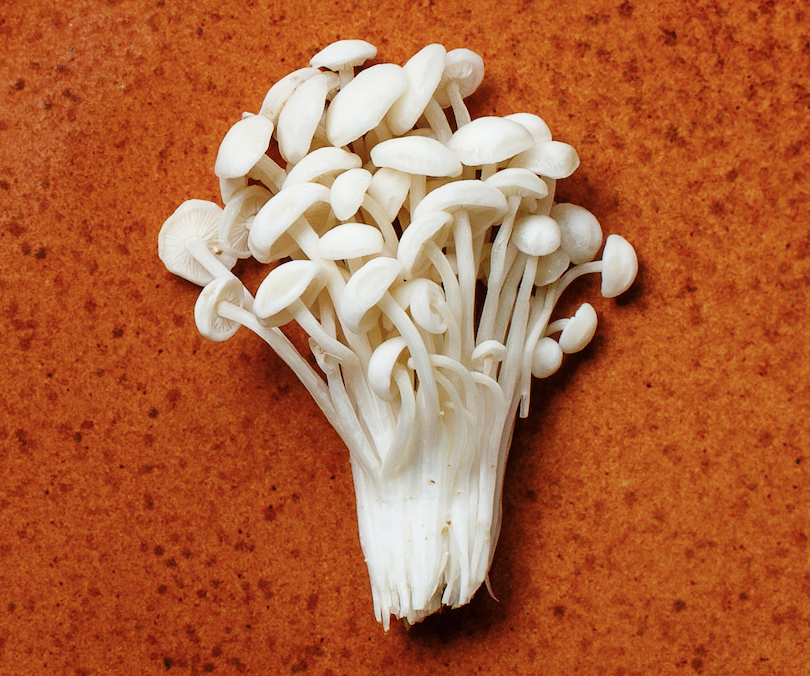 MitoPrime is a thion/thione derivative known as L-ergothioneine (ET) and may be considered a natural amino acid antioxidant/vitamin, because it’s found in many tissues throughout the body and derived from the diet via a specific transporter known as OCTN1. In the diet, ET is present in mushrooms, black and red beans, garlic, oat bran and organ meat. ET appears to have strong antioxidant capabilities working to reduce oxidative stress, modulate the inflammatory response and help protect the cells of the body from various damaging effects, including neuroprotection.
MitoPrime is a thion/thione derivative known as L-ergothioneine (ET) and may be considered a natural amino acid antioxidant/vitamin, because it’s found in many tissues throughout the body and derived from the diet via a specific transporter known as OCTN1. In the diet, ET is present in mushrooms, black and red beans, garlic, oat bran and organ meat. ET appears to have strong antioxidant capabilities working to reduce oxidative stress, modulate the inflammatory response and help protect the cells of the body from various damaging effects, including neuroprotection.
It has been shown that as we age, ET levels decline as cognitive function declines. A deficiency in ET may predispose people to mild cognitive impairment and possibly neurodegeneration. In one study, Japanese researchers suggested that the uptake of ET in the brain via the ET transporter might contribute to reducing oxidative stress, thereby possibly helping reduce the signs and symptoms of neurological degeneration.11 The same group of researchers also suggested that ET might suppress chronic overactivation of microglia in the brain, which is involved in development of further neurogeneration.12 Because ET has been found to be present in the body acting as a protective antioxidant in the brain, some scientists believe the current North American diet may be lacking this critical micronutrient and as a result, we may not be experiencing the neuroprotection it offers.
Dosing
ET is a very effective antioxidant when it comes to overall brain health. MitoPrime uses a patented natural fermentation process to deliver a pure and stable form of the L-isomer of L-ergothioneine. It can be used in quantities of up to 5 milligrams per serving, with a daily maximum dose of 30 milligrams per day. It also synergizes with many other nootropics and anti-aging supplements.
Nootropic Stacking and Your Needs
 As discussed, nootropics can cover a wide range of ingredients and functions that can benefit your brain power, mood, energy and focus and even offer brain protection and fuel! Stacking needs can be completely dependent on your unique personal needs. Consider your activity level, your job, your workouts, your diet and even your age when you determine your nootropic needs.
As discussed, nootropics can cover a wide range of ingredients and functions that can benefit your brain power, mood, energy and focus and even offer brain protection and fuel! Stacking needs can be completely dependent on your unique personal needs. Consider your activity level, your job, your workouts, your diet and even your age when you determine your nootropic needs.
MUSCLE INSIDER Nootropic Stack
Start with a foundational nootropic stack of RhodioPrime 6X, C8Vantage, KetoVantage, and MitoPrime at the doses recommended above. This will give you consistent brain fuel that can be replicated each day to provide you with optimal cognitive support. Next try adding to the stack with a few of the additional nootropics mentioned above to see how your body and brain reacts.
- Suliman NA, et al. Establishing natural nootropics: Recent molecular enhancement influenced by natural nootropics. Evid Based Complement Alternat Med. 2016.
- Caraceni T, et al. 2-Dimenthylaminoehananol (Deanol) in Huntington’s Chorea Journal of Neurology, Neurosurgey, and Psychiatry. 1978;41: 1114-1118.
- Darbinyan V, et al. Clinical trial of Rhodiola rosea L. extract SHR-5 in the treatment of mild to moderate depression. Nord J Psychiatry. 2007;61(5):343-8.
- Spasov AA et al. A double-blind, placebo-controlled pilot study of the stimulating and adaptogenic effect of Rhodiola rosea SHR-5 extract on the fatigue of students caused by stress during an examination period with a repeated low-dose regimen. Phytomed. 2000;7(2):85-9.
- Shevtsov VA, et al. A randomized trial of two different doses of a SHR-5 Rhodiola rosea extract versus placebo and control of capacity for mental work. Phytomed. 2003;10(2-3):95-105.
- Olsson EM, et al. A randomized, double blind placebo-controlled, parallel-group study of the standardized extract SHR-5 of the roots of Rhodiola rosea in the treatment of subjects with stress related fatigue. Planta Med. 2009;75(2):105-12.
- Khabbush A, Orford M, Tsai YC, et al. Neuronal decanoic acid oxidation is markedly lower than that of octanoic acid: A mechanistic insight into the medium chain triglyceride ketogenic diet. Epilepsia. 2017;58(8):1423.
- Gunstad J, et al. Serum Brain-Derived Neurotrophic Factor Is Associated With Cognitive Function in Healthy Older Adults Journal of Geriatric Psychiatry and Neurology. 2008;21(3):166-170.
- Cuenoud B, et al. Metabolism of Exogenous D-Beta-Hydroxybutyrate, an Energy Substrate Avidly Consumed by the Heart and Kidney. Front. Nutr. 2020;7:13
- Murray J, et al. Novel ketone diet enhances physical and cognitive performance. FASEB J. 2016;30:4021-32.
- Nakamichi N, et al. Physiological roles of carnitine/organic cation transporter OCTN1/SLC22A4 in neural cells. Biol Pharm Bull. 2017; 40(8):1146-52.
- Ishimoto T, et al. Carnitine/organic cation transporter OCTN1 negatively regulates activation in murine cultured microglial cells. Neurochem Res. 2018;43(1):116-128.

